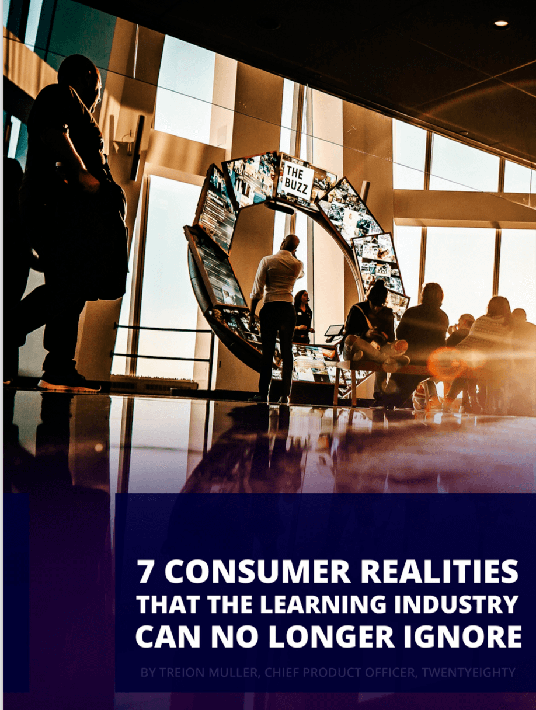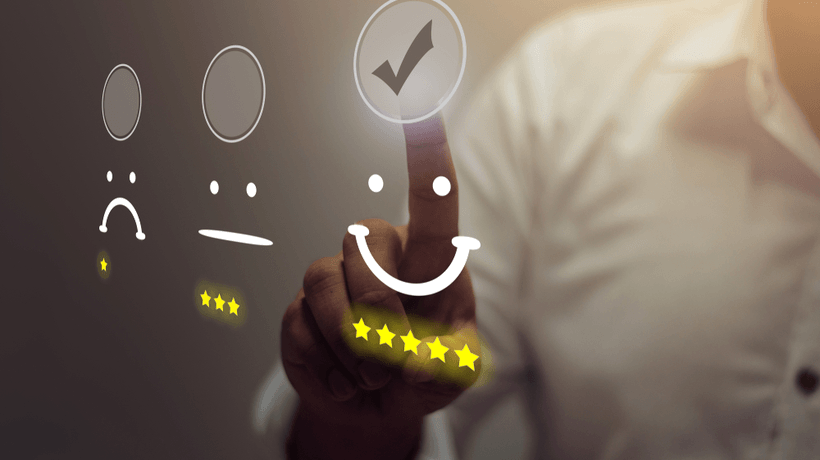What Consumers Of Learning Want (Part 1): Parity Between Their Personal And Professional Lives
There is a peculiar disparity that has been steadily growing over the past few years between how consumers of everyday information and how learners of formal organizational training see, access, and engage with information. It’s as if we live 2 separate lives.

In one life, our personal one, we are active participants in the digital revolution going on around us—where we find answers to questions immediately, where we crowdsource our problems, where we make choices only after comparing and contrasting similar products on our smartphones, where we listen to books in the seams of our day, and where if we want something, we order it and receive it in two days.
In our second life, our professional one, we are passive observers to a bygone era where if we want to find answers or training we must attend a two-day workshop a month from now. Where we are required to go through an internal portal for all tech and work-related problems which may take weeks to resolve. Where learning is defined as clicking through mind-numbing self-paced courses, or virtually attending and listening to the talking head of death, and where choices are made for us.
Digital Enablement In The Professional World
Data from a recent MIT SLOAN report on digital business supports these observations and suggests that "employees have become increasingly frustrated by what they are capable of accomplishing with digital tools in their personal life compared with how they are forced to work with their own company through email and non-mobile computing." (MIT SLOAN - Aligning the Organization For its Digital Future)
Can you relate? Are you seeing this disparity in your personal and professional lives? The professional learning establishment has been conditioned for so long on what Learning and Development should look, feel, and smell like that it has forgotten to open its eyes and see what it has become and should be like. Years of designing, developing, launching, and delivering successful traditional learning solutions followed by occasional iterative improvements to programs and work sessions have placed L&D in the proverbial comfort zone—where we’ve forgotten who our learners really are, and how they want to learn, from a practical standpoint.
For starters, we must no longer think of the end-users of our training products as just learners because that puts them into the wrong target audience. We must remember that our learners are also consumers in a digital world, and as such, seek custom knowledge and all types of information in very different ways than in the past. I realize that using the term "consumer" and "learner" interchangeably may not seem to be technically correct. After all, these are traditionally two very distinct and different roles we play. But when we consider the end state, which is essentially the acquisition of relevant answers to a question, or a solution to a problem, or directions on "how to" address an issue or challenge, then it is not hard to make the connection. Thinking of our target audience as consumers of information forces us to think differently about them, and helps us rethink, reframe, and reinvent our roles as L&D professionals in a number of significant ways.
Taking into account our intended audience—the solution or skill set they are seeking, their real work environment, their learning opportunities—what will they consume? Not what do we think they should consume, but what will they in actuality do? This is the purpose and intent of this series of articles (and my associated eBook), to help you become more aware of what consumers are actively choosing to do so that you can determine how this applies to your specific L&D needs and learners.
This is relevant because a significant challenge that this divided perception brings to the workplace is that it contributes to employees bringing their heads to work but leaving their hearts at the door, as Stephen R. Covey put it. While the dissonance between how learners want to consume and acquire content, and the way they are forced to do so may not be the only reason for the head/heart disconnect, it is, in my opinion, a major contributing factor, and one we must no longer ignore. It’s time for a change, and the solution starts with us becoming aware of the 7 consumer realities outlined below.
7 Consumer Realities
Professionals in the L&D industry, and associated human resource, talent management, and training professionals, must make a concerted effort to start bringing the learner and consumer lives into alignment. In particular, we have to open our eyes and see what consumers are asking for and then align our learning programs and initiatives to those behaviors. To facilitate this intervention, I’ve identified '7 Consumer Realities' (or behaviors) that need to be acknowledged and applied to L&D.
While none of these realities may be new to the reader, when considered in their totality alongside one another, and in context with Learning and Development, these 7 realities make a strong argument for change and leave a lasting impression on all the possibilities. (As you look over these 7 realities, please replace the word "it" in the title with - answers, information, solutions, resolutions, personal development, tools, resources, or anything that applies to the acquisition of knowledge, or desired behavior change.)
- I want it now!
- I want it to the point!
- It has to look good and work well, or I'm dumping it!
- I don't want all this other stuff!
- I want to paint the picture!
- I want to be entertained!
- I want the same at work!
1. I Want It Now!
The first consumer behavior we have to consider is how we have come to expect answers on demand and just in time (JIT). Since you likely fall into the 44% of people in the world, or 83% of people in the US who own a smartphone (McKinsey 2016 Telecommunications, Media, Technology (TMT) Digital Insights), your behavior is also likely aligned with some, if not all, of the following interesting consumer behaviors:
- 9 out of 10 people use their cell phone in the bathroom (Deloitte - Global mobile consumer survey: US edition)
- 71% of people report that they usually sleep with or next to their mobile phone (Bank of America - Trends in Consumer Mobility Report -2015)
- 66% of people use their phones is for on-demand access to information
- 91% of people look up information on their smartphones while in the middle of another task
- 82% of people consult their phones while they're standing in a store deciding which product to buy—1 in 10 ends up buying a different product than they had planned because of information they consumed (Google Micro Moments)
- 1 in 5 Millennials surveyed relies exclusively on smartphones and tablets to get online. (Commscore)
- 55% of Millennials rely on social media as their primary source for shopping news and information (Black Hawk Network)
With data like that it’s no surprise that Google processes over 40,000 search queries/second or 3.5 billion searches/day, or that 5 billion videos are watched on YouTube/day (Google search). Forrester Research claims that 'the secret ingredient is the mobile moment—that moment where a customer gets anything she wants, immediately, and in context." (Forrester - Why Good Apps Are Not Good Enough)
Google has also realized how valuable this consumer behavior is and, since they have access to all the respective data anyway, has started to share some of that information with us under what they call 'micro-moments':
“Micro-moments are critical touch points within today’s consumer journey, and when added together, they ultimately determine how that journey ends.” - Google Report. (2015). Micro-Moments: Your Guide to Winning the Shift to Mobile
Yep; fast food, self-checkout, Amazon Prime, streaming videos, lightning fast networks, instant access, and micro-moments are very real. So, what are we in T&D doing about it?
Look for the next few consumer realities in my next article coming soon.
You may also want to download the full eBook!









